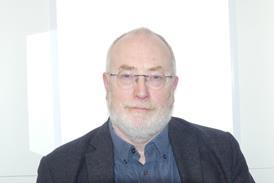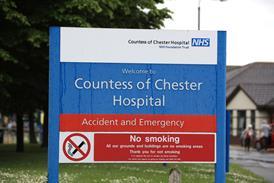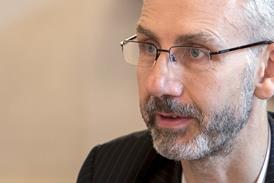Steve Fairman wonders if the surge in ideas from the NHS front line will make a significant contribution to improving the quality and efficiency of services

It has been inspiring seeing the surge of ideas come forward from the NHS front line in phase 1 of the HSJNT/NHS Improving Quality “Challenge Top-Down Change” campaign. A chord has been struck – many people have ideas to improve the NHS and the care it gives to patients.
The cold question – some of which will be addressed by the final phase of the Change Challenge campaign – is: will implementing these ideas make the kind of significant contribution to improving the quality and efficiency of services called for in the recent NHS Five Year Forward View?
‘The NHS is dramatically different from a decade ago though still performing a similar function’
Recently, I was privileged to be in the audience when Clayton Christensen, professor of business administration at Harvard and a world thought leader on “disruptive” innovation, shared his latest thoughts on investing in innovation. He described three basic types of innovation.
Market creating innovation
The first type of innovation Professor Christensen described is “market creating”. These are those we are used to thinking of as “disruptive”. The example he quoted was the computer.
As each new form (mainframe, desktop, laptop, tablet, smartphone, wearable, etc) has developed, it has opened up entirely new markets and opportunities that the previous generation was unable to support.
This is particularly true of the “jump” to mobile computing. All organisations need to consider how they invest in using these innovations as part of their business model, even if they do not develop them themselves.
Sustaining innovation
Professor Christensen’s second innovation category is “sustaining” innovation.
Here, something is constantly improved, but it basically serves the same function(s).
He used the example of the motor car. Those produced today with electric windows, air conditioning, rain sensors and hybrid engines are very different, and more luxurious, than those of 20 years ago but their basic function as a means of personal transportation remains.
Most of the products we see in society (and healthcare) fit into this category. Much of what we see today in the NHS is dramatically different from a decade ago though still performing a similar, if much extended, function.
Diagnostic tools are probably one of the most obvious examples, where whole pathways of care have been able to be redesigned as technology has advanced.
‘Are we making enough of our investment in these two innovation categories?’
Both of these two innovation categories might be described as offering opportunities for transformational change – or doing better things.
From an economic perspective how we spread investment across these is a critical factor in deciding the degree of our longer term success. However, we wish to measure that.
In the NHS we would wish this to be quality care and outcomes, and the efficiency of our resource use.
The question for the NHS is: are we making enough of our investment in these two innovation categories?
As a challenge, are we in the NHS really exploiting the possibilities and potential value from using tablets, smartphones and wearable technology?
As many diagnostic tools become smaller and usable in new settings, and health monitors easily wearable, are our new models of care going to maximise the value of, and even anticipate, this trend? Are there models we could not even have conceived one year ago?
Efficiency innovation
The final type of innovation discussed by Professor Christensen is “efficiency”innovation.
Here resources are focused on doing the same basic thing, perhaps to a better standard, but for less money, thereby releasing cash to reinvest elsewhere.
These will be incredibly important to the NHS in the next few years as we seek to realise £22bn in efficiencies.
This category of innovation is really about transactional change or doing things better.
‘There’s a limit to how much released cash can be invested in finding more efficiencies’
Professor Christense’s final point was on the dangers of over-focusing resources on “efficiency” innovation.
Economically, there is a limit to how much released cash can continue to be invested in finding ever more efficiencies. At some point you must start to do better things.
When reflecting on these categories, it is striking to note that most ideas coming forward are “efficiency” innovations, with a few “sustaining” innovations.
This is not surprising, but as a public service the NHS needs to consider the spread of its investment across all three types of innovation if it is to thrive in the longer term as a tax funded system.
I look forward to increasing engagement across the NHS as the Change Challenge continues.
Steve Fairman is managing director of NHS Improivng Quality























No comments yet